Polar Deserts
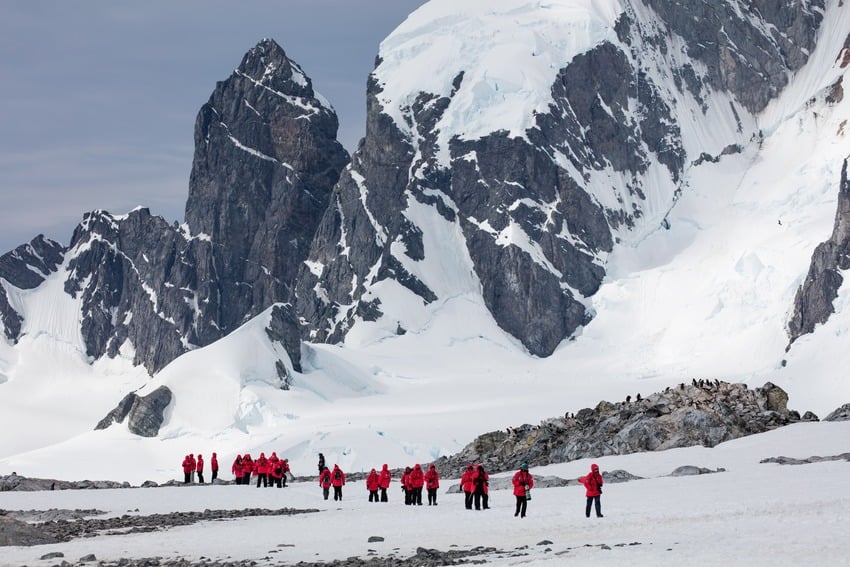
It’s not only extreme heat that can kill you. While hot deserts may sound like an extremely uncomfortable place to find yourself, the frigid temperatures of the polar deserts may be as deadly! The largest deserts on Earth are located in the polar zones: the Arctic and Antarctica. And did you know that with the right preparation and expedition team, a visit can be a safe and exhilarating experience?
What is a Polar Desert?
You may picture a dry and extremely hot area when thinking of deserts, but deserts come in many different forms! The polar desert areas on Earth cover 14 million square kilometers (5.5 million square miles) of Antarctica and 13.9 million square kilometers (5.4 million square miles) of the Arctic.
With sparse vegetation, mean annual temperatures of 10C (50F) or lower and a very dry climate with less than 25cm (10 inches) of precipitation per year, large areas of the polar regions qualify as cold deserts. There is a difference between true polar deserts and tundra areas. True polar deserts are barren with a permanent ice cover (apart from a few cases such as the Dry Valleys in Antarctica). Tundra regions feature permafrost, with a thin layer of soil thawing during the summer, allowing for limited plant life. The few plants that can grow in the tundra are perfectly adapted to withstand the long cold winter months and use the short summers to grow quickly.
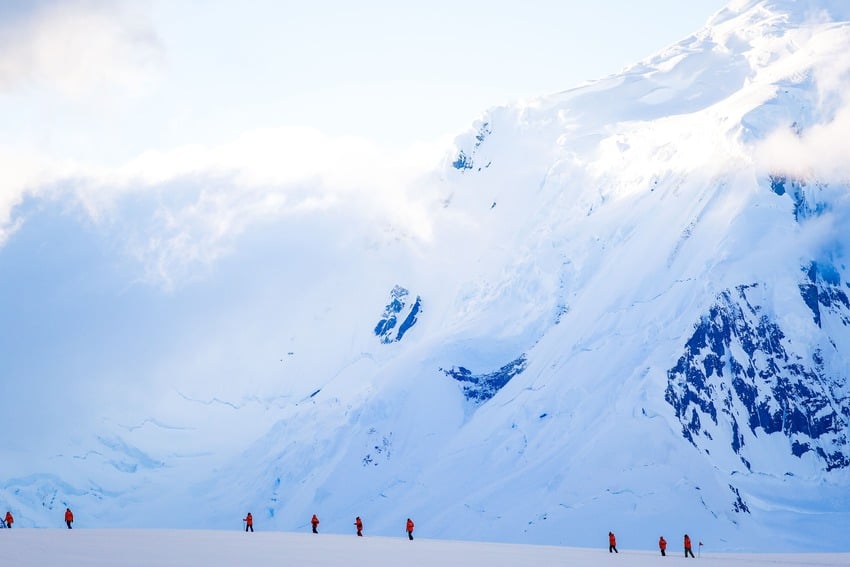
Arctic Polar Deserts vs Antarctic Polar Deserts
Is there really a difference between polar deserts in the Northern and Southern hemispheres? To the untrained eye, it may look all the same: a relentless ice-covered and bleak place on the planet. But take a closer look! Read on and learn about the key differences between the Arctic and Antarctic deserts.
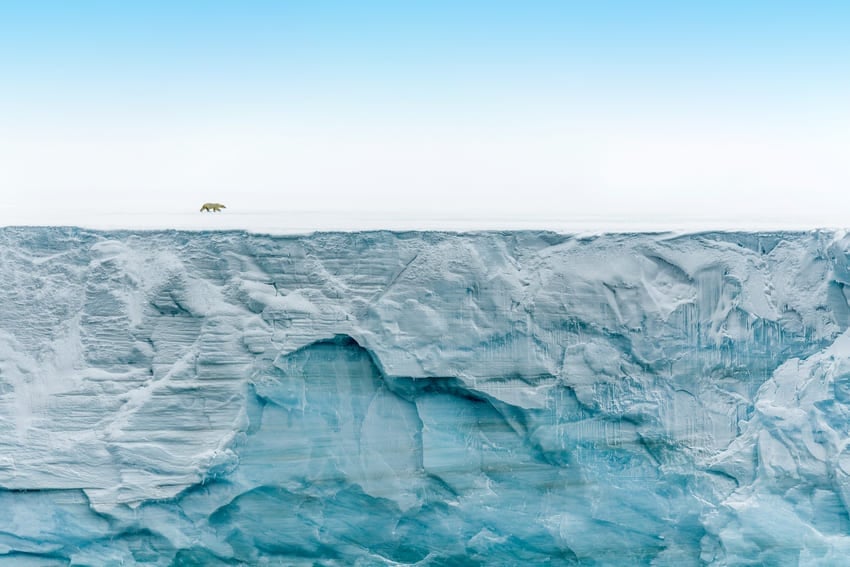
The Arctic Desert
You can find the Arctic desert areas close to the North Pole and surrounded by the Arctic Ocean:
-
Only 5% of the Arctic desert is covered by plants such as lichens, mosses and algae.
-
You can see iconic wildlife such as polar bears, arctic foxes, walruses, seals and whales.
-
Humans live here: Inuit adapted to these extreme conditions and made the Arctic deserts their home.
-
You can only spot a narwhal in the Arctic Ocean! (You can’t see them in Antarctica)
- The Arctic desert territories consist of different nations and cover the Northern parts of the Asian, European and North American continents.
The Antarctic Desert
The Antarctica desert is home to the South Pole in the continent’s interior and is surrounded by the Southern Ocean:
-
The majority of the Antarctic continent is a true polar desert.
-
Not all parts of the Antarctic desert area are covered by ice: the McMurdo Dry Valleys on the continent are dry, snowless and cold deserts, with exposed soil.
-
Antarctica hosts the world’s largest salt lakes.
-
Wildlife thrives only in the coastal areas, while in the dry interior area you mostly find microbes, soil invertebrates, algae and lichens.
-
No country in the world owns Antarctica.
-
You can get a glimpse of how life on other planets may look like: the deserts of Antarctica have similar conditions to those on the surface of Mars!
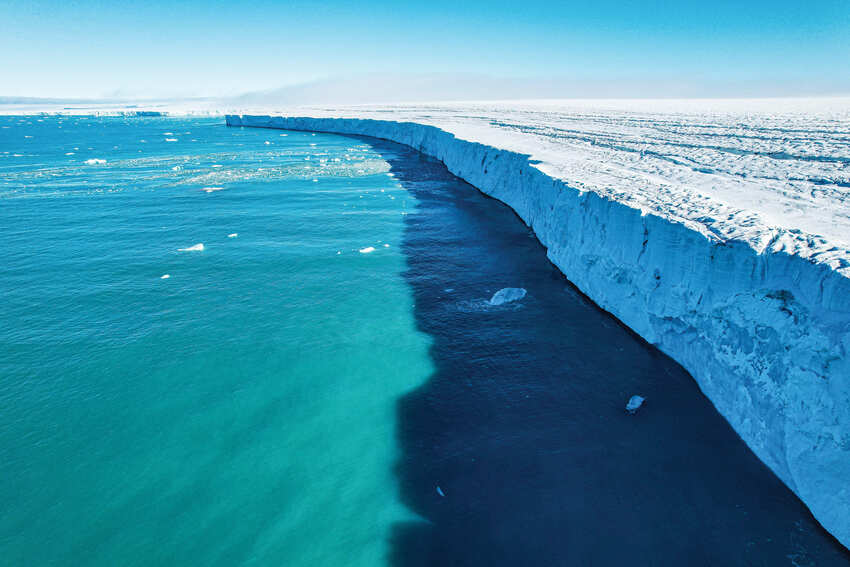
Visiting and Exploring Polar Deserts
The Arctic and Antarctic polar deserts are the largest in the world and you can visit them! But why travel to a bleak, cold and inhospitable place you may ask…well, even the polar deserts are incredibly beautiful and full of life! While plant life is sparse and plant growth is usually limited to the short summer months, you can find perfectly adapted polar species such as mosses, lichens, grasses, fungi and shrubs.
Most visitors come for the unique polar landscapes and exquisite wildlife viewing. Did you know that in summer the Arctic desert areas in Svalbard are in full bloom? While you may only find limited species in the extreme Dry Valleys of the Antarctic polar desert, the coastal regions boast a great variety of plant and animal life! Expect penguins, seals, rare seabirds and whales, as well as the unbelievable polar landscapes of the Southern Hemisphere.
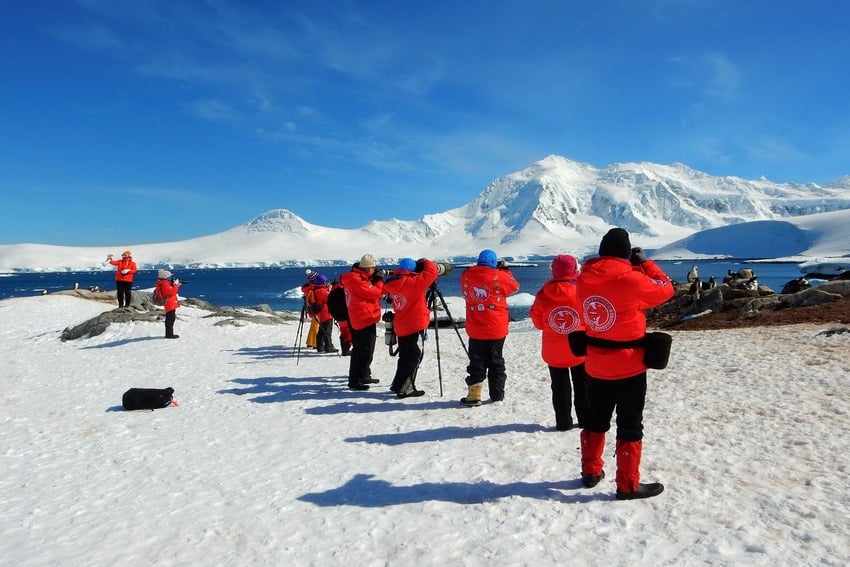
Checklist for planning your polar desert adventure:
North or south?
Choose your favorite polar region and what you want to see. A hint: there are no polar bears in Antarctica and no penguins in the Northern Hemisphere!
How to travel.
Choose the expedition that suits your adventurous spirit! There are various options such as expedition cruises, adventurous ski and hiking trips, flightseeing, etc.
Catch the best season.
If you want to make the most of your trip, it all depends on timing. Check our polar seasons calendar to see when it’s best to visit.
Gear up!
The polar deserts require adequate preparation and clothing! Dress in layers and opt for insulating materials such as wool and synthetics. We also suggest investing in good footwear, wind- and waterproofing outside layers, hats, gloves, scarves and sunglasses.
FAQs
Is there an Arctic desert?
The Arctic territory above 75 degrees north latitude is considered the Arctic desert region. It belongs to the cold deserts in the world, with less than 25 cm (10 inches) of precipitation per year, similar to the Sahara Desert. Polar deserts feature freezing temperatures and a year-round snow and ice cover. Svalbard, Greenland, Franz Josef Land, Severny Island and Severnaya Zemlya are part of the Arctic desert.
What are examples of polar deserts?
The McMurdo Dry Valleys in Antarctica are an example of an Antarctic polar desert area, while Greenland and Svalbard are examples of the Arctic polar desert.
Is a polar desert still a desert?
Yes, but it depends whom you ask. The deserts of the polar regions are classified as such because they receive a minimum amount of precipitation. There are several opinions on how little rain and snow qualify a region to be a desert. Some accept 25cm (10 inches) or less annually, while others consider deserts to be areas that receive 12.5 cm or less. Another characteristic of deserts are strong dry winds.